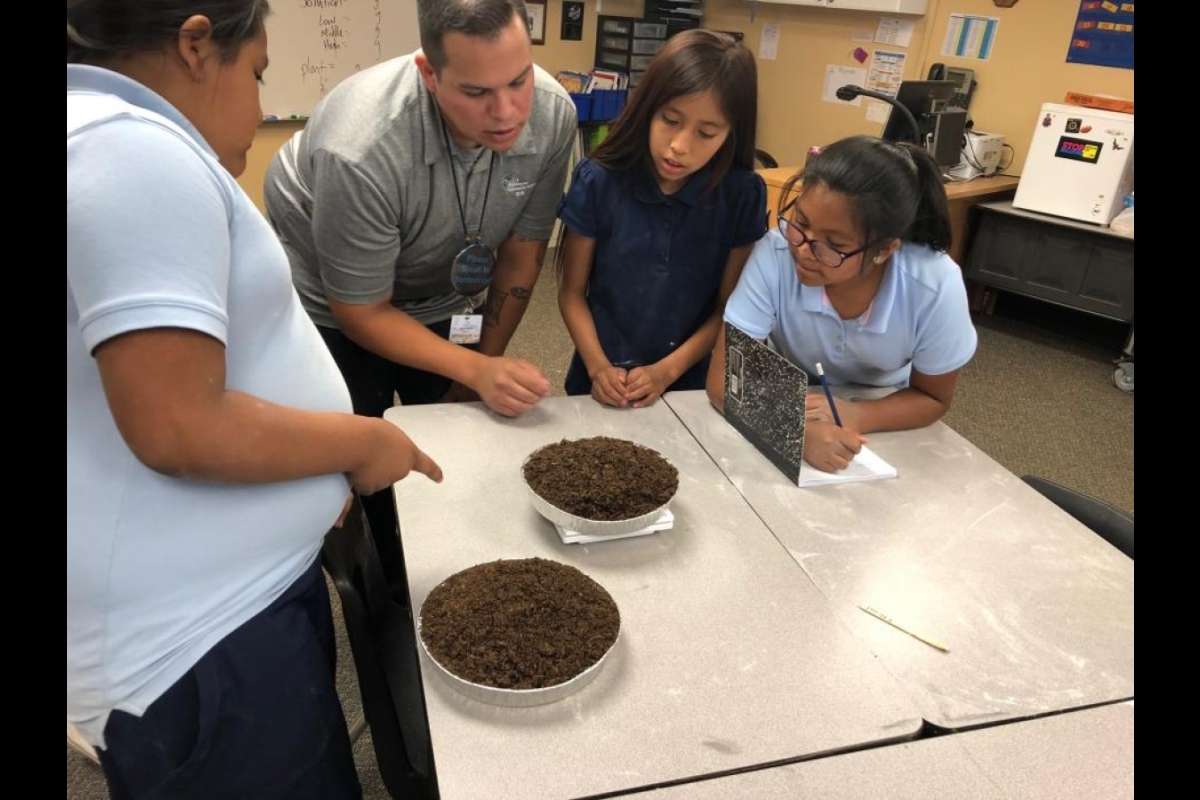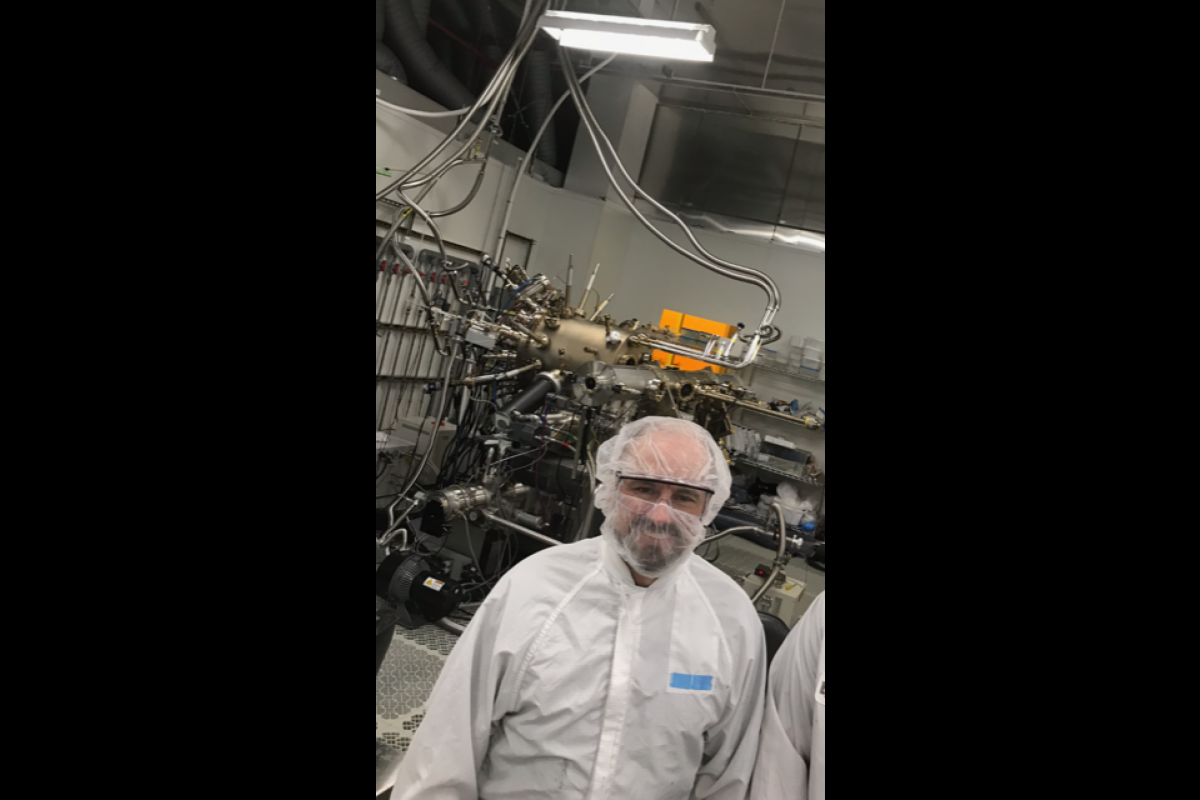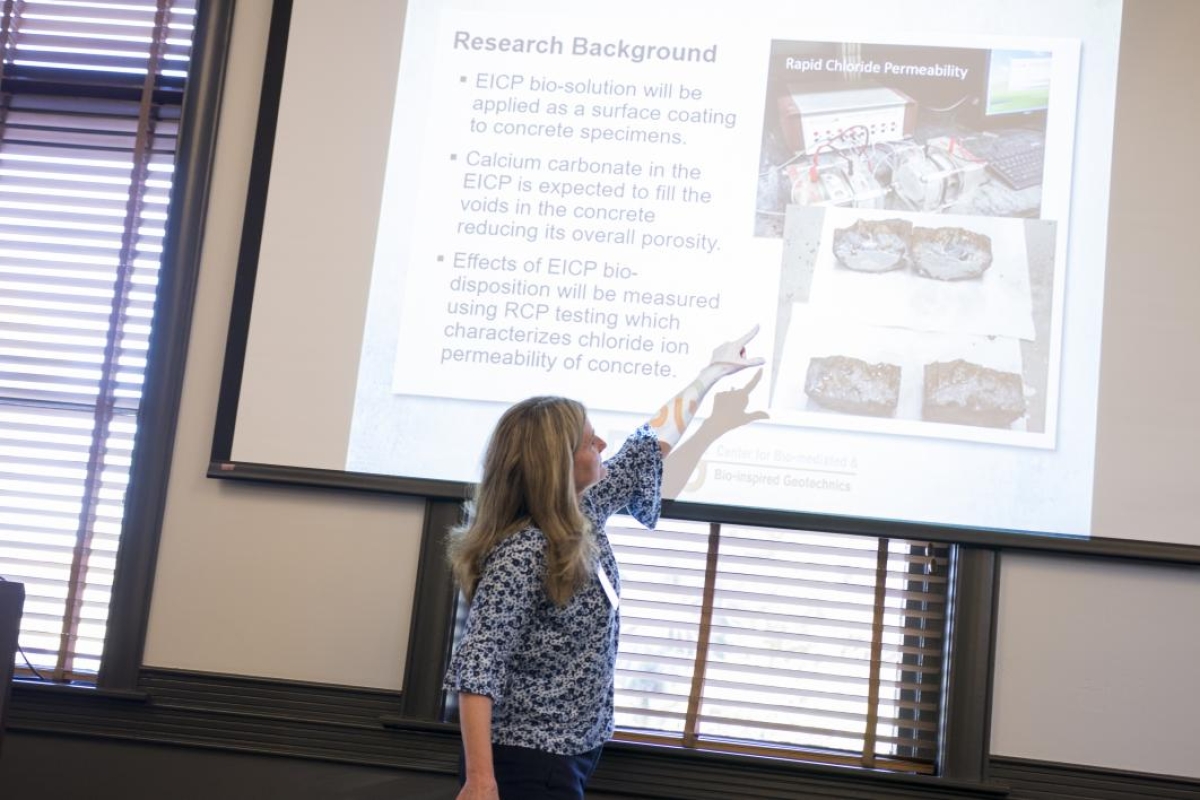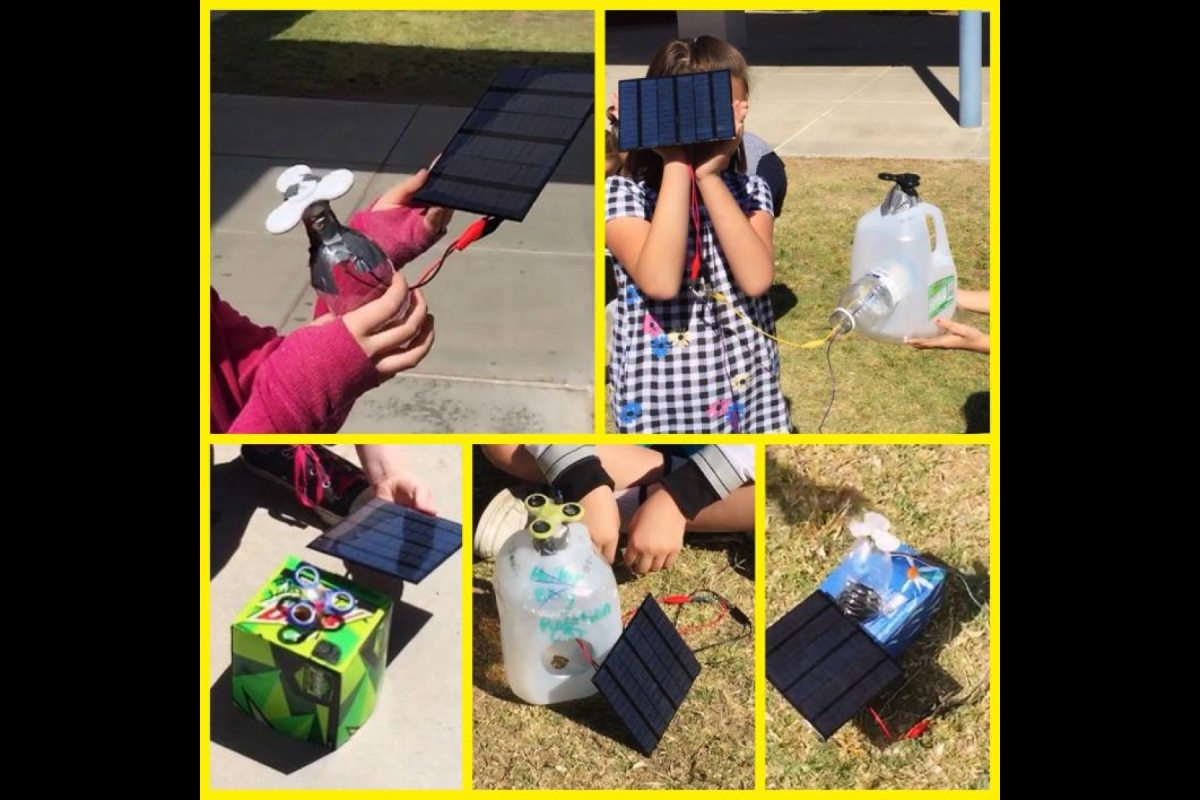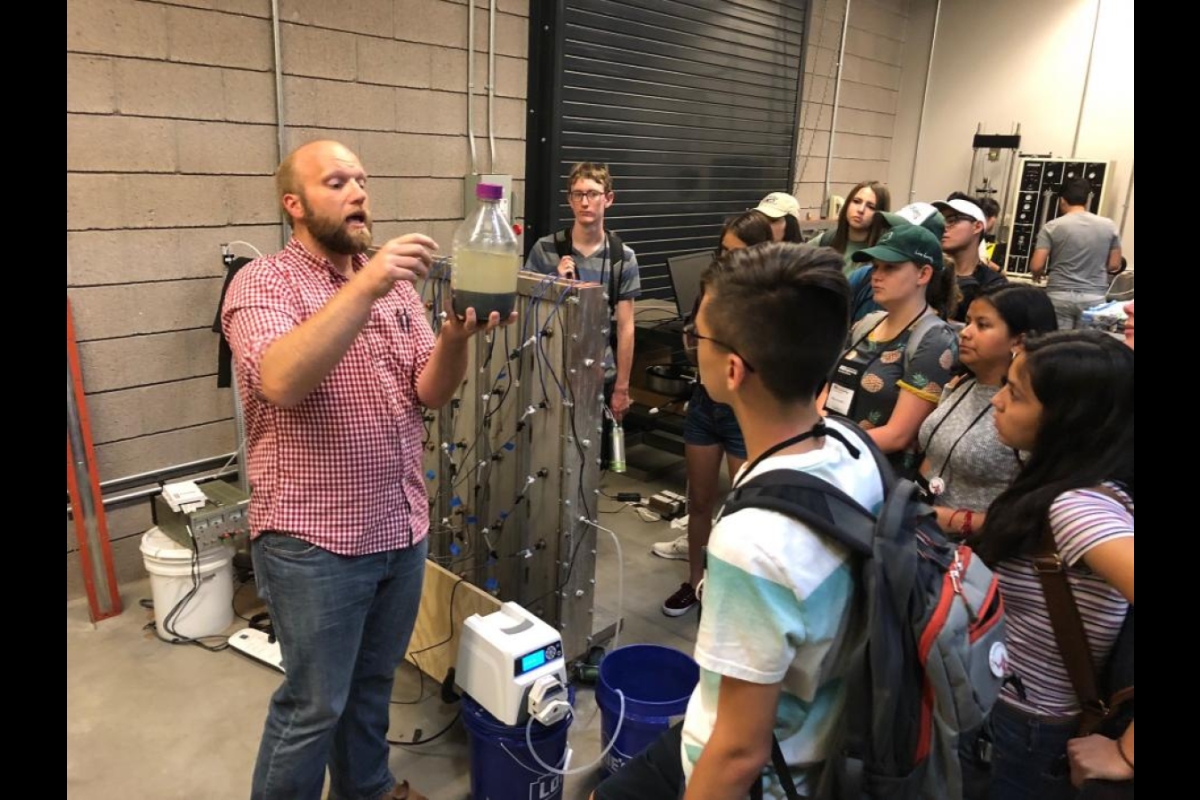High school math teacher Andrew Strom felt thrilled when he was recruited for an eight-week stretch working with Arizona State University engineering researchers this past summer.
Another feeling emerged once he began getting immersed in the researchers’ projects.
“It was very humbling because I realized I don’t really know anything,” Strom said with obvious humor.
But the thrill wasn’t gone. It was amplified.
“What I saw is that there is so much new knowledge and information out there being generated in science and engineering, so much to be learned. It’s incredible,” said Strom, who has taught at Corona del Sol High School in Tempe, Arizona, for 23 years.
Strom’s recent endeavors with faculty and graduate students in ASU’s Ira A. Fulton Schools of Engineering took place at the facilities of the Sensor Signal and Information Processing industry consortium, a National Science Foundation Industry/University Cooperative Research Center known as SenSIP.
Professor Andreas Spanias, SenSIP’s director, helped Strom develop ideas for lessons designed to interest young students in engineering. One set of lessons helped students in Strom’s senior math and trigonometry classes to understand the complex fast Fourier transform algorithm for audio compression, a popular mathematical method used in engineering applications.
Strom’s lessons focused on examples such as illustrating connections between the dynamics and spectrum of sound and how those apply to the electronics involved in making and recording music.
“It’s something that kids can relate to, and it shows them the kinds of things that all those mathematical formulas and equations help to make happen in the world,” Strom said.
Beyond that, such lessons help teachers give students an in-depth view of the cool things researchers are doing and discovering — which can ignite a motivating flame that will drive students onto career paths in science, engineering, technology and math, Strom said.
That outcome is precisely the aim of the NSF’s Research Experiences for Teachers in Engineering and Computer Science program, RET for short, which opened the door for Strom’s summer stint with SenSIP.
Tailoring teaching approaches to students’ social environments
Four other ASU research centers led by Fulton Schools faculty are giving teachers from kindergarten through community college similar opportunities — funded by stipends from the NSF — through the RET program.
Nanotechnology-Enabled Water Treatment Systems, known as NEWT; Quantum Energy and Sustainable Solar Technologies, called QESST; and the Center for Bio-mediated and Bio-inspired Geotechnics, known as CBBG, have altogether brought dozens of these teachers into their labs for five- to eight-week RET sessions over the past several summers.
NEWT and CBBG are NSF Engineering Research Centers, while QESST is a joint NSF and Department of Energy Engineering Research Center.
The Nanotechnology Collaborative Infrastructure-Southwest, known as NCI-SW, has hosted one or two teachers for the past few summers in its own RET program, which coordinates its activities with the QESST center’s program.
SenSIP has hosted a single teacher so far but is seeking an RET program grant to recruit as many as eight teachers for next summer.
Some teachers have been so impressed with their experiences that they have returned for a second summer of research and then a third summer as peer mentors for first-time teachers participating in the programs, says Jean Larson, the education director for CBBG who coordinates its RET program.
The RET program’s primary focus is on drawing teachers from underserved communities, particularly those with at-risk youngsters or students living in areas where socioeconomic factors make them less likely to be exposed to engineering and science, says Larson and Christina Crawford.
Crawford coordinates RET programs from Rice University in Houston, the lead institution for the NEWT research centers.
Larson and Crawford emphasize that RET sessions are designed to not only guide teachers on specific ways to more effectively teach science and engineering and develop curriculum, but also on how to tailor their teaching methods and approaches to the cultural, social and demographic environments in which their students live.
Research projects respond to communities’ challenges
In some cases, the research projects the teachers get involved in align with environmental challenges in their communities.
Lance Reyna has taught elementary school students for most of his eight years at the Blackwater Community School in the Gila River Indian Community. He participated in CBBG’s RET program this past summer, joining a team researching fugitive dust.
Fugitive dust is made up predominantly of fine-grained soil particles — composed of silica, aluminum, calcium and iron minerals, among others — that can escape into the atmosphere and cause respiratory irritation in humans. The airborne particles are also associated with increases in cases of Valley fever as the spores responsible for the fungal infection are transported into the air along with the soil particles.
High levels of fugitive dust are a persistent problem in the Gila River community’s open desert environs, so people living there are often inhaling a lot of dirt, dust and bacteria, Reyna said.
The school regularly puts green, yellow, orange or red “health flags” on its playing field to indicate air-quality conditions. A red flag indicates poor air quality and means schoolchildren are not permitted to play outside.
So what Reyna learned from his ASU research was especially relevant to his fourth-grade students at Blackwater.
When he gave lessons about fugitive dust — lessons he titled “Gone with the Wind” — “my kids could relate firsthand to what I was talking about,” he said.
“It was the perfect research project to be part of because of the demographics and geography of where I work,” Reyna added. “It really helped bring the learning to life for my students. They’ve done the same research I did over the summer, which they all loved and were fully engaged in.”
Reyna said he wants to participate in RET programs “for years to come.”
Educators see program’s impact in improved learning proficiency
Scott Currier, a fourth-grade teacher at Highland Lakes, a K-8 school in Glendale, Arizona, has joined in RET programs at ASU for the past three summers — once in CBBG, twice with QESST.
Like Strom, Currier calls the program “the best professional development experience I’ve had.”
ASU researchers, especially the graduate students, created a working atmosphere that was “super high-energy and fun,” Currier said.
More satisfying has been the change he has seen since he began teaching lessons based on his experience in the RET programs.
“They are doing far more than just reading about science,” he said. “They are getting hands-on and building things. They are experimenting. They are doing some basic engineering.”
As a result, Currier reports a notable jump in the percentage of his students meeting or exceeding the testing standards for science proficiency — now at more than 90 percent, compared with about 80 percent before he participated in the RET programs.
“They are excited about doing science, and the most important thing I have learned is how to teach them about where that enthusiasm could take them,” he said. “In those ASU labs you get to work with real innovators, and now I feel like some future innovators are in my classes today.”
Wendy Cullivan, who recently began teaching biology at McClintock High School in Tempe after 13 years teaching eighth-grade science classes, is another veteran with three summers in RET programs, two with QESST, one in CBBG.
What she has learned has helped enable her to compose several days of “fun,” interactive lessons on solar energy and the urban heat-island effect, plus “how to make concrete interesting to students,” Cullivan said.
Working with skilled researchers, “you start seeing the connections between what’s going on in science and how that is shaping our lives,” and showing those connections is the key to stoking students’ curiosity.
The RET program “inspires me as a teacher to learn more about science and engineering, so I try to pass on that inspiration to students,” Cullivan said.
Teaching techniques to boost student engagement
Michelle Jordan says teachers are learning not only from university researchers but from the other teachers they participate with in the summer sessions.
Jordan, education director for QESST and coordinator of its RET program, is also an associate professor in ASU’s Mary Lou Fulton Teachers College with expertise in educational psychology and the learning sciences.
The RET teachers “work together and share what they learn and support each other,” she said. “They have formed a community among themselves.”
The teachers are also finding ways to give back to the RET program. Besides returning to RET summer sessions as mentors, some of the teachers have helped the ASU research centers with other outreach projects, attended workshops and conferences and written articles on their RET experience for educational publications.
RET program coordinators also stay in touch with teachers to assess how they are continuing to apply what they’ve learned to their classes and how it is impacting students’ learning.
“Our relationships with these teachers are extensive and long-lasting,” Jordan said.
The program is designed not only to better equip teachers to instruct young students about what today’s engineers and scientists are discovering and producing, Jordan explained, but also “how to engage students in designing their own research and making their own discoveries.”
Paving pathways to future progress for society
RET teachers also benefit from working alongside some of the top students from colleges and universities around the country who come to ASU for summer sessions supported by the NSF Research Experiences for Undergraduates program and with high schools students in the NSF Young Scholars program.
Some teachers also collaborate with local community college students involved in the education outreach efforts of the NCI-SW research consortium.
The NCI-SW RET program offers teachers opportunities to learn about research in six high-profile laboratories and centers at ASU doing work that involves a range of nanotechnology applications in electronics, energy, manufacturing, materials engineering, environmental engineering and development of advanced biotechnologies.
“The feedback we get from teachers tells us they’re most excited about the exposure to new ideas and to different people, students and faculty, who are doing so many different and fascinating things in their research,” said NCI-SW education and outreach coordinator Raymond Tsui, who came to ASU with three decades of engineering experience in the high-tech electronics industry.
Tsui and his fellow program coordinators and research center education directors Larson, Jordan and Crawford stress that their ultimate measure of success is when the motivation RET teachers derive from their experiences at ASU is passed on to those educators’ students.
“The important thing is we’re building pathways for young students’ futures,” Larson said. “Their education and their success will translate into progress in engineering and science that will benefit our country and the world.”
Top photo: Scott Currier says lessons he developed through his work in Research Experiences for Teachers programs at ASU helped him get his fourth-grade students excited about doing science and engineering, and led to significant improvement in their performance on science proficiency tests. Photo courtesy of Scott Currier
More Science and technology
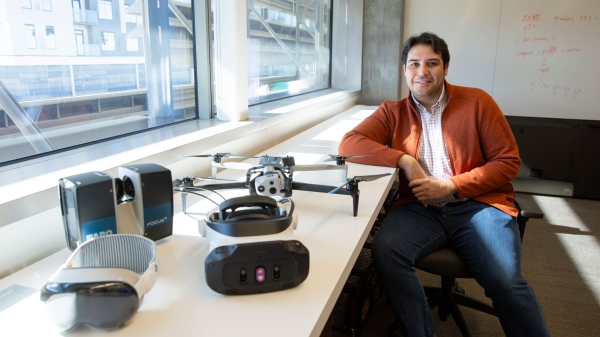
Teaching construction realities with virtual environments
Visiting a construction site is a valuable learning opportunity for students who want to one day work in the industry. Experiencing the sights, sounds and other sensory elements of an active…
ASU, Mexico partner to build next generation of chipmakers, drive semiconductor innovation
Thousands of college students in Mexico will soon have the opportunity to enroll in Arizona State University’s new, free online course to learn the fundamentals of microelectronics and…
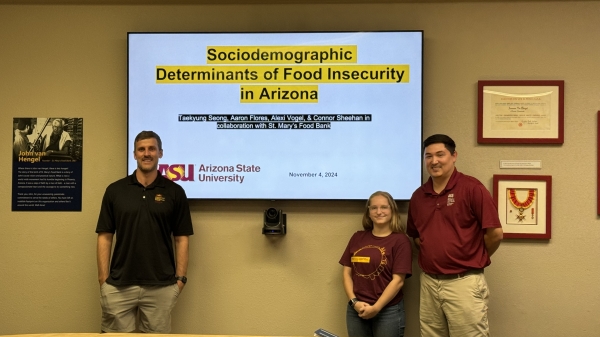
ASU, St. Mary’s Food Bank partner to tackle food insecurity in Arizona
Arizona State University and St. Mary’s Food Bank (SMFB) have joined forces to create an interactive data dashboard that tracks and maps food insecurity rates across Arizona. This innovative tool…

